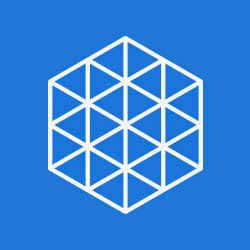Google Science Fair facts for kids
The Google Science Fair was a global online science competition for students that ran every year from 2011 to 2018. It was sponsored by big names like Google, Lego, Virgin Galactic, National Geographic, and Scientific American. The competition was open to students almost everywhere in the world.
To enter, students between the ages of 13 and 18 had to come up with a science project. They needed to form a question (a hypothesis), run an experiment to test it, and share their results. All projects were submitted online in English, German, Italian, Spanish, or French.
Judges looked at how well students presented their ideas and the quality of their research and experiments. The prizes were amazing! The grand prize winner received a US$50,000 scholarship and a trip with National Geographic to the Galapagos Islands. Finalists also won scholarships and prize packages from the sponsors.
Contents
Inspiring Scientists
The science fair's website featured interviews with famous scientists to inspire the young participants. These experts included Mitch Resnick, who helped create the Scratch programming language, and Kevin Warwick, a professor known for his work in robotics.
2011 Winners
- Grand Prize: Shree Bose, age 17, studied a drug used to treat ovarian cancer. She looked for ways to stop cancer cells from becoming resistant to the medicine.
- Ages 15–16: Naomi Shah studied how air quality affects the lungs, especially for people with asthma.
- Ages 13–14: Lauren Hodge researched how marinades can reduce harmful chemicals when grilling meat. She found that lemon juice and brown sugar worked well.
- People's Choice Award: Nimal Subramanian won this award for his project on fighting cancer, which was voted a favorite by the public.
2012 Winners
- Grand Prize: Brittany Wenger, age 17, created a computer program to help diagnose breast cancer without surgery. Her program was over 99% accurate in tests.
- Ages 15–16: A team from Spain—Iván Hervías Rodríguez, Marcos Ochoa, and Sergio Pascual—won for their project studying tiny creatures in water.
- Ages 13–14: Jonah Kohn built a device that turns sound into vibrations. This helped people with hearing loss experience sound in a new way.
2013 Winners
- Grand Prize: Eric Chen, age 17, used computers to search for new ways to fight the flu. His goal was to find a medicine that could work against all types of influenza viruses.
- Ages 15–16: Ann Makosinski from Canada invented the Hollow Flashlight. It runs on the heat from a person's hand, so it doesn't need batteries.
- Ages 13–14: Viney Kumar from Australia created a system to warn drivers when an emergency vehicle is near, giving them more time to move out of the way.
2014 Winners
- Grand Prize: A team from Ireland—Ciara Judge, Emer Hickey, and Sophie Healy-Thow—won for their project on food production. They used a type of bacteria to help cereal crops grow faster.
- Ages 17–18: Hayley Todesco from Canada developed a method for cleaning up waste from oil sands.
- Ages 13–14: Mihir Garimella was inspired by fruit flies to design more advanced flying robots.
- Voter's Choice Award: Arsh Shah Dilbagi from India created a device that allows people who cannot speak to communicate by turning their breath into words.
2015 Winners
- Grand Prize: Olivia Hallisey, age 16, won for creating a new, low-cost test for the Ebola virus. Her test works quickly and doesn't need to be kept cold, making it useful in remote areas.
- Google Technologist Award: Girish Kumar created a program that automatically makes study questions from educational texts to help students learn.
- Community Impact Award: Lalita Prasida Sripada Srisai from India found a way to use corn cobs to clean pollutants from water.
2016 Winners
- Grand Prize: Kiara Nirghin, age 16, from South Africa, found a way to fight drought using orange and avocado peels. She created a material that can hold hundreds of times its weight in water, helping soil stay moist for crops.
- Lego Education Builder Award: Anushka Naiknaware, age 13, invented a "smart" bandage that can tell when a wound needs a new dressing by sensing moisture levels.
- Scientific Innovator Award: A team from the U.S. made up of Ashton Cofer, Luke Clay, and Julie Bray, found a way to turn foam waste into useful filters.
2017 Competition
The competition took a break in 2017. The website announced that it would return the following year.
2018 Winners
The science fair returned in 2018 with many new prizes.
- Grand Prize: Fionn Ferreira from Ireland won the top prize of a $50,000 scholarship. He developed a method to remove tiny plastic particles, called microplastics, from water using magnets.
- National Geographic Explorer Award: A team from India, A U Nachiketh Kumar and Aman K A, found an environmentally friendly way to process rubber.
- Lego Education Award: Daniel Kazantsev from Russia created a system to help hearing-impaired people better understand the world around them.
- Scientific American Award: Tuan Dolmen from Turkey discovered a way to create energy from the natural vibrations of trees.
- Galactic Pioneer Award: Celestine Wenardy from Indonesia invented a low-cost device for measuring blood sugar that doesn't require a needle.
See also
- Science fair


